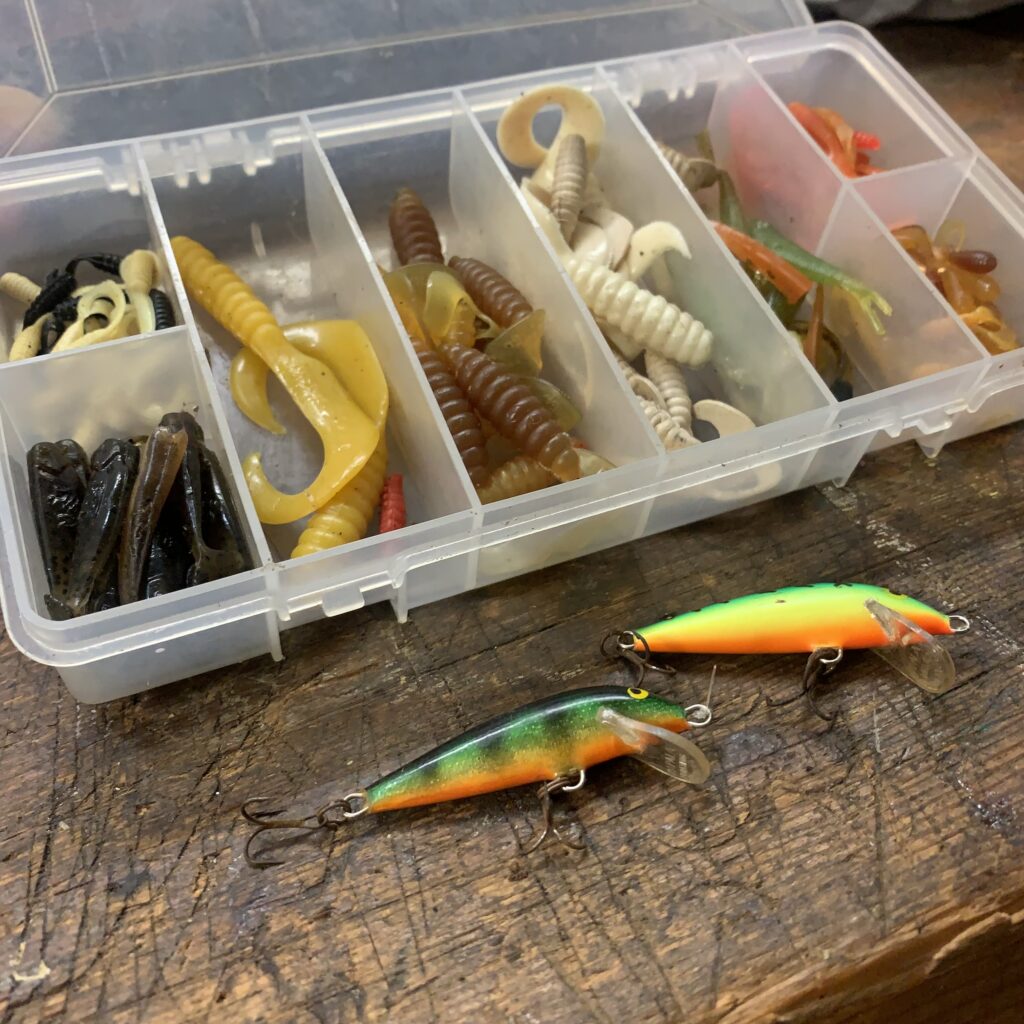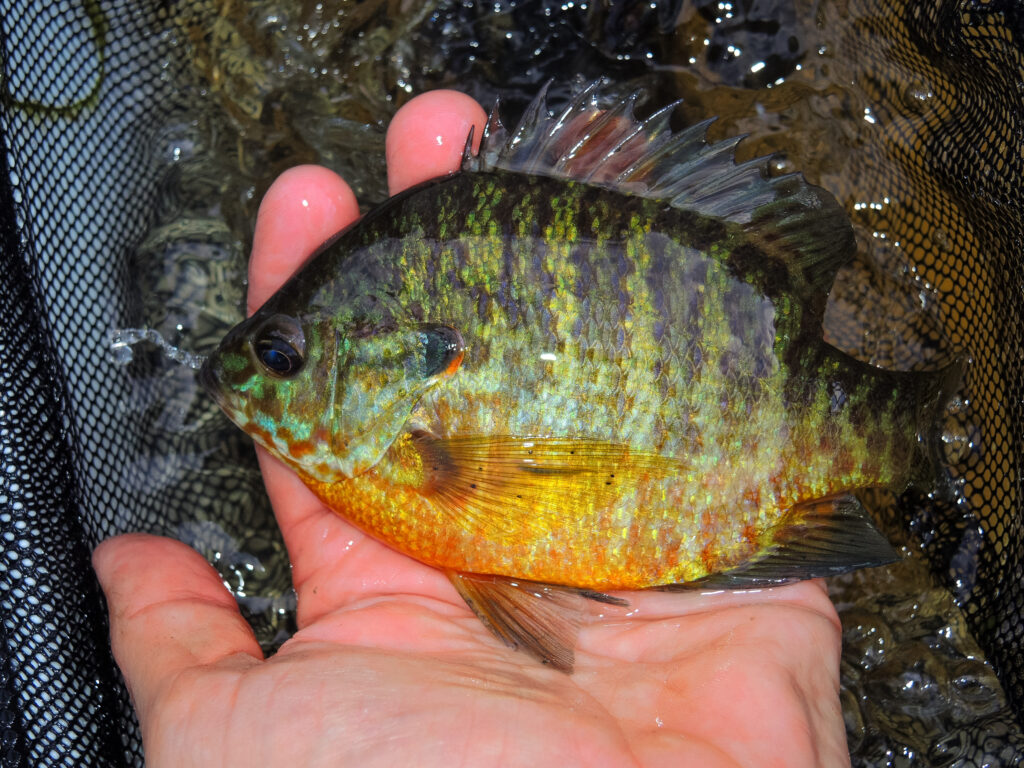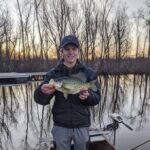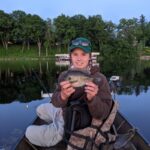Hey there anglers! As a fisherman who grew up fishing for panfish, there’s something special about heading out to catch them in the crisp autumn air. Fall panfish fishing is not only exciting for advanced anglers, but also an excellent opportunity for both beginners and intermediate anglers to hone their skills. As always, fishing education and conservation are our priorities here at The Angler’s Line. Feel free to sign up for our free newsletter to join our community and stay up to date! So, let’s dive in and learn everything you need to know to make your fall panfish fishing adventures unforgettable!
Table of Contents:
- Fall Panfish Behavior
- Gear and Equipment
- Fall Panfish Lures
- Locating Panfish In The Fall
- Panfish Fishing Techniques
- Fall Weather Considerations
- Conservation
Understanding Fall Panfish
First things first, let’s get to know our scaly targets – panfish! The panfish category includes bluegill, crappie, perch, and more. Each of these species have their own nuances, but a lot of their preferences are similar. They might be small in size, but boy, can they put up a fight!
In the fall, panfish change their habits, moving to shallower waters as they prepare for the colder months. Keep an eye out for their behavior changes to increase your chances of success.
Gear and Equipment For Panfish
By no means do you need specialized equipment for panfish when you are first getting started, but having the correct gear as you get more advanced is advantageous for panfish.
Rod and Reel
For panfish, a lightweight fishing rod and reel setup works best. This allows you to cast the light lures necessary and feel the subtle bites. I prefer an ultralight spinning rod between 6 and 6.5 feet in length. As far as reels go, a size 500 or size 1000 spinning reel is ideal for fishing panfish.
Fishing Line
When fishing for panfish, having a fishing line with a thin diameter is critical. I recommend choosing a line between 4 lb and 6 lb of test. Fluorocarbon and monofilament lines are the main lines that I use when fishing for panfish. If fishing crystal clear water, fluorocarbon is the way to go do to its low-visibility in the water.
Best Lures for Fall Panfish
As for bait and lures, panfish have a hearty appetite in the fall to gear up for the winter months ahead.
Live Bait
When most people think of panfish fishing, they think of live bait. Panfish generally can’t resist a worm or minnow! Make sure to select the panfish live bait for the given species of panfish you will be targeting. Minnows tend to work best for crappies, and worms and insets are best for sunfish species and perch. Use small jigs or split shot rigs to present live bait. If fishing small minnows for crappie, a slip bobber rig can be a great way to go.
Soft Plastics
Soft plastics are often overlooked by panfish anglers, but can be a great option for panfish when fishing in the fall. Like other species of fish, panfish tend to feed heavily in the fall months leading up to winter. Soft plastics allow you to fish quicker and more aggressively than live bait. Some great soft plastic options for fall panfish include grubs, paddle tail swimbaits, and tubes. Remember to choose the smallest soft plastic sizes available to adhere your presentation towards panfish.
Crankbaits
Hard-bodied lures such as mini panfish crankbaits are another effective way to catch fish in the fall. Use crankbaits to cover water and locate actively feeding schools of panfish. Crankbaits are effective for both sunfish and crappie during the fall months. When panfish are feeding on minnows, mini crankbaits are the way to go.

As always, experiment with different lures and retrieves to find what the panfish want on a given day. Keep in mind that their preferences can change depending on water clarity, barometric pressure, and other weather factors. Don’t hesitate to experiment with different sizes and colors to match the prevalent forage. In stained or murky waters, brighter or contrasting colors can enhance visibility.
Finding Fall Panfish Hotspots
The gear is only one aspect, now it’s time to find the fall panfish hotspots. When it comes to fall panfish location, most types of panfish are located in the same areas this time of year. The exception to this is crappie.
Sunfish, Perch, and Rock Bass
Finding “vertical cover” is critical. What I mean by vertical cover is cover that sticks up vertically in the water column. Look for shallow areas with vegetation or submerged trees. As the name implies, rock bass can often be found in rocky areas as well. Panfish love to hide and feed in these spots. Make sure to fish green weeds as they produce the most oxygen and have the most life. Avoid fishing weed beds that have already died off in the fall months.
Crappie
Crappie are a bit of a different animal as far as fall fishing location goes. Instead of shallow water, crappie relate more to the lake basin in the fall. As mentioned before, crappie are minnow feeders and feed heavily on schools of baitfish suspended in the basin this time of year. Look for isolated basin areas between 20-30 feet in depth surrounded by shallower water. Use your electronics to located crappie during the fall since they are likely to be schooled up in small areas.
Techniques for Fall Panfish Fishing Success
Each fall panfish lure requires a slightly different technique to maximize its effectiveness. Here are three good techniques to start with, but don’t be afraid to add your own slight variations to each one.
Bobber Fishing
Bobber fishing is a great technique for presenting live bait when fishing for panfish. When fishing for panfish, be sure to choose a specifically designed panfish bobber. If fishing shallow water (less than 6 feet), use a clip-on bobber set to a fixed depth. For slightly deeper water, a slip-bobber is much more effective. Add a slip-shot and hook beneath your bobber with your choice of live bait. This technique works best when you have already located a school of panfish since it does not cover much water.
Vertical Jigging
Vertical jigging is a technique that I have incorporated into my fall panfish fishing arsenal for many years now. Once you get the hang of your electronics and can decipher what panfish look like, vertical jigging is an extremely effective way to target them. Simply use a jig or split-shot rig with either live bait or soft plastics, and fish vertically over the side of the boat. This technique works best in deeper water since panfish are less likely to be spooked with your boat over the top of them. Vertically jigging is one of my favorite methods for catching fall crappie in the basin.
Casting
A great way to cover water and locate panfish in the fall is casting. Cast with mini crankbaits or soft plastics and constantly stay on the move until you find fish. Incorporate occasional twitches and pauses into your retrieve and constantly experiment. Some days and slow and steady retrieve may be best while other days may require something more aggressive. Once you have located panfish and they stop biting, feel free to switch up to more subtle retrieves like bobbers or vertical jigging to get a few more bites.
Reading the Fall Weather
As the fall weather can be unpredictable, it’s crucial to understand how it affects panfish behavior. Adjust your techniques and bait choices accordingly to adapt to the weather conditions.
Sunny vs. Overcast
On sunny days, you’ll find panfish roaming around. In shallow water, they may be slightly off of the weed edge or cover. In the basin, they may be more suspended then usual. When its cloudy in the fall, panfish tend to be stay much closer to cover and hunkered down near bottom.
Wind
Most fisherman know that when fall rolls around, so does the wind. Heavy winds push baitfish and insects around in the water. Baitfish and insects tend to concentrate on the windward side of structure, and so do the panfish as a result. If it is calm, look back at the winds from the previous day to get an idea of where the bait and panfish may be concentrated.
Conservation and Ethical Fishing Practices
As responsible anglers, it’s crucial to prioritize conservation and practice ethical fishing

Catch and Release
Adhere to catch-and-release guidelines whenever possible to preserve the panfish population for future generations. Handle fish with care, use barbless hooks to minimize injury, and return them to the water as quickly and gently as possible. If you plan on keeping a few fish for a meal, release the larger fish to let them spawn.
Regulations and Limits
Stay informed about local fishing regulations and adhere to size and bag limits. These limits are in place to ensure sustainable fish populations and healthy ecosystems. Ignorance is no excuse, so take the time to familiarize yourself with the specific regulations in the areas you fish.
Leave No Trace
Respect fish and wildlife habitats by minimizing your impact and leaving the environment as pristine as you found it. Dispose of any trash properly and consider participating in organized shoreline cleanups. Respecting nature and its resources is crucial for future generations of anglers to enjoy.
With the right gear, some tried-and-true techniques, and a bit of luck, fall panfish fishing can be incredibly rewarding for anglers of all skill levels. Fall is a great time of year to be on the water, and the bite is normally pretty good.
So, grab your fishing rod, head to the nearest body of water, and immerse yourself in the joy of fall panfish fishing. Remember, it’s not just about catching fish; it’s about connecting with nature, making memories, and cherishing the moments spent by on the water. Happy fishing!
More Panfish Fishing Articles:
- Lure Talk: Best Crappie Lures For Each Season

- Ice Fishing For Crappie: Everything You Need To Know

- Slip Bobber Crappie Fishing: Everything You Need To Know

- Summer Panfish Fishing: Everything You Need To Know

- Ice Fishing For Panfish: Everything You Need To Know

- Fall Panfish Fishing: Everything You Need To Know

